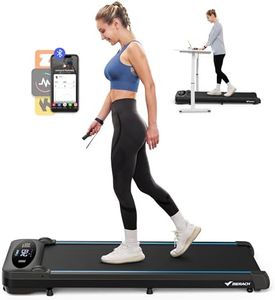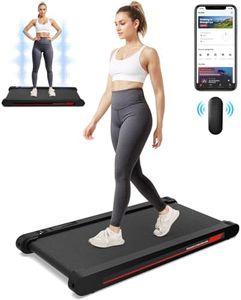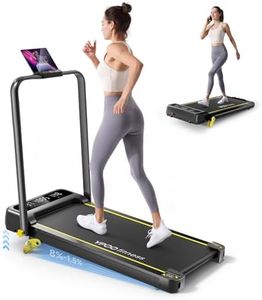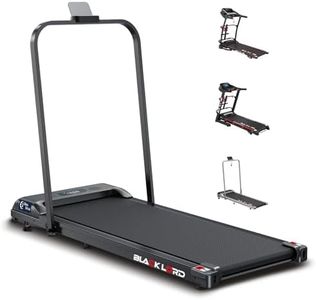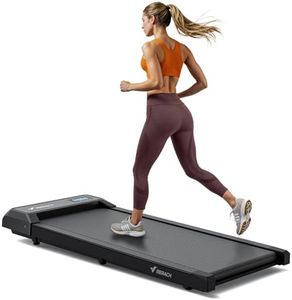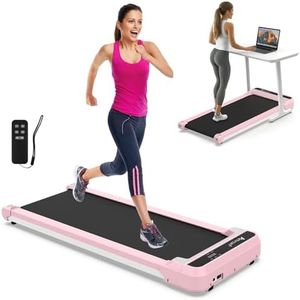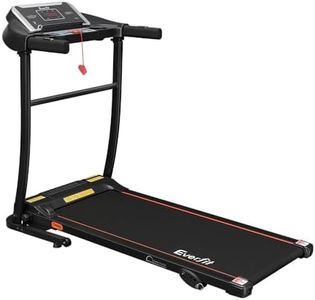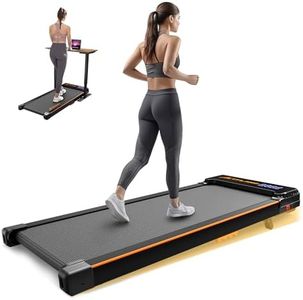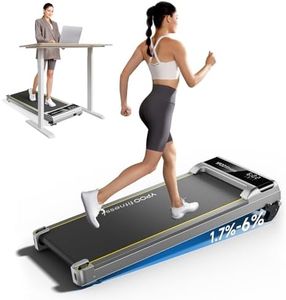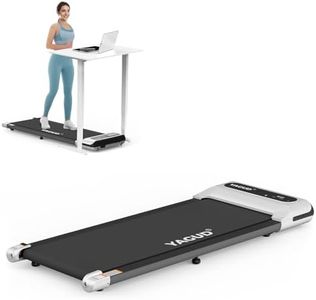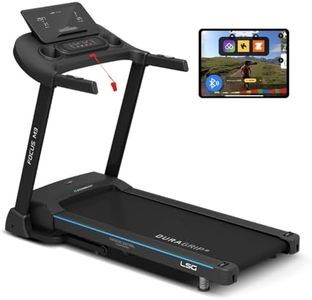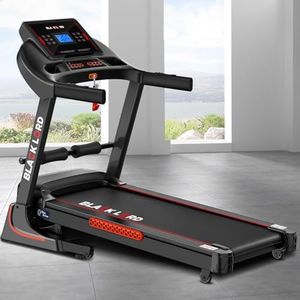We Use CookiesWe use cookies to enhance the security, performance,
functionality and for analytical and promotional activities. By continuing to browse this site you
are agreeing to our privacy policy
10 Best Quiet Treadmills
From leading brands and best sellers available on the web.Buying Guide for the Best Quiet Treadmills
When looking for a quiet treadmill, the goal is to find a machine that allows you to work out without causing too much noise, whether it's for your peace, the comfort of those living with you, or simply so you can watch TV or listen to music without distraction. Several features contribute to how quiet a treadmill is, but it's important to balance your need for silence with your desired performance, size, and extra features. Examine core technical features, and always consider your intended use—whether it's walking, jogging, or running.Motor Type and PowerThe motor is the heart of the treadmill, and it has a significant impact on noise level. Higher-quality, efficient motors (often labeled as 'continuous duty') tend to run more smoothly and quietly. Motor power is usually measured in horsepower (HP), and for most home use, motors between 1.5 HP and 3.0 HP are common. Lower-powered motors may be quieter but can struggle at higher speeds or with heavier users, while higher-powered ones can sometimes be noisier but handle intense workouts better. For primarily walking, a lower HP may be sufficient and quieter, but for running, a bit more power is advisable even if it means a slight increase in noise.
Belt Cushioning and ThicknessThe treadmill's running belt and its underlying cushioning system influence how much impact noise you hear with every step. Thicker, well-cushioned belts help absorb sound, leading to a quieter exercise experience. Thinner or poorly cushioned belts may transfer more noise from footfalls. If you plan to run or walk frequently, especially at higher speeds, choose a treadmill with reinforced cushioning and a thicker belt as it will be both quieter and gentler on your joints.
Deck ConstructionThe treadmill deck is the surface under the belt, and its construction also matters for noise. Solid, quality construction will dampen vibrations, reducing both sound in the room and the amount transferred to the floor. Look for decks described as layered or with shock-absorbing features. If you live in an apartment or share floors with others, this detail is even more critical to avoid disturbing neighbors.
Weight Capacity and StabilityHow sturdy and stable a treadmill is can affect how much it shakes or rattles, especially during more vigorous exercise. A treadmill with a higher weight capacity and solid build will typically stay quieter under load. If you're a heavier user or will use the treadmill for running, look for a model with higher weight ratings and positive reviews about stability to minimize noise from movement or wobbling.
Maintenance RequirementsA well-maintained treadmill runs more quietly. Some models need regular belt lubrication, alignment, or tightening of bolts, while others require less upkeep. If you prefer less hands-on maintenance, look for features such as self-lubricating belts or easy-access adjustment systems. Being proactive about maintenance ensures your treadmill stays quiet over time.
